RSNA 2012 Slideshow: On the Exhibit Floor
CHICAGO - From dose-reduction and workflow solutions to MR and mammo innovations, the RSNA 2012 exhibit floor was buzzing with new products. Here’s a sampling.

Siemens’ MAMMOMAT Inspiration Prime Edition mammography system aims to decrease radiation dose by up to 30 percent by replacing the use of a scatter radiation grid - which, by virtue of radiation absorption, increases patient dose - with a progressive image reconstruction algorithm. The system is pending 510(k) clearance.
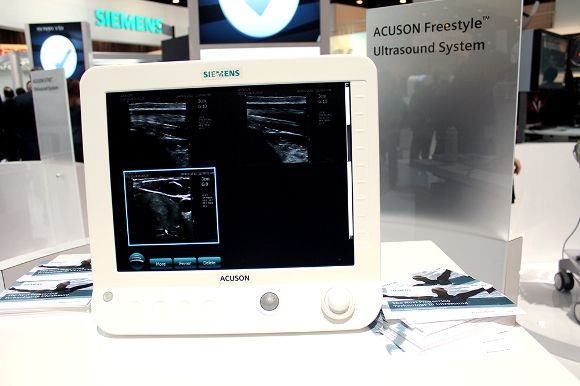
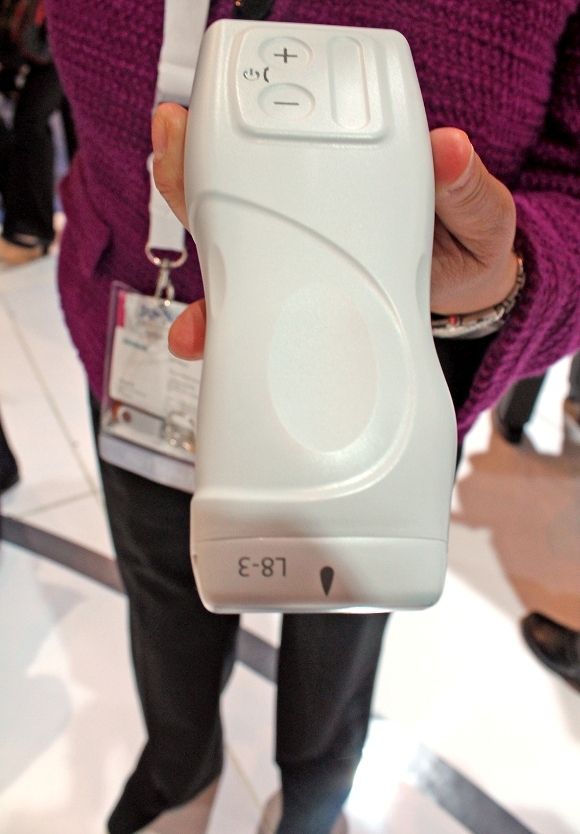
Siemens touted the ACUSON Freestyle ultrasound system as the first wireless transducer ultrasound system, which aims to streamline the ultrasound process. It also increases the level of sterilization within the ultrasound laboratory, since the wireless transducer is designed to be fully immersible in liquid for disinfection purposes, the company said.
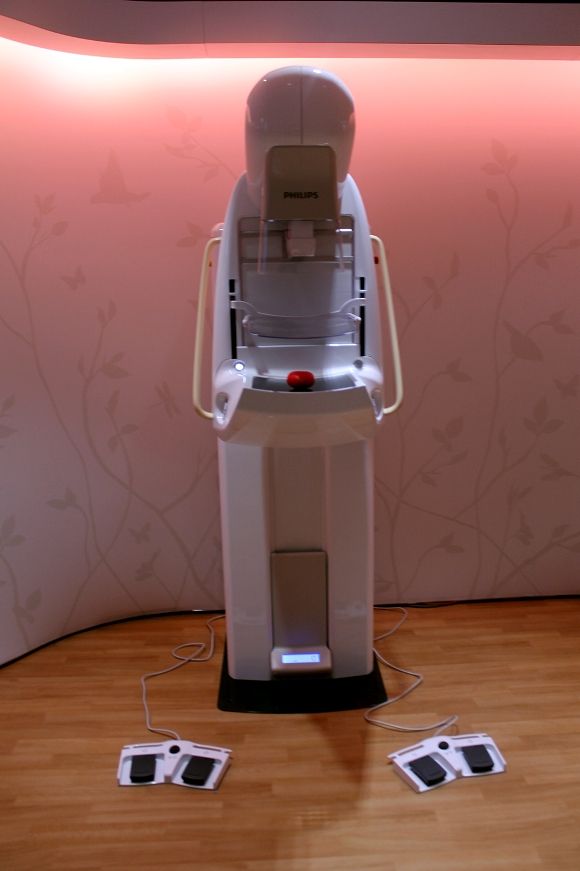
Philips' MicroDose Mammography Single-Shot Spectral Imaging (SI) uses X-ray photon-counting technology that reduces dosage by up to 50 percent, achieves 50 micrometer resolution and boasts a collimator design that rejects 97 percent of scatter with 100-percent pixel warranty, according to the company. It also allows for Spectral Breast Density Measurement. This product is not commercially available in the U.S.
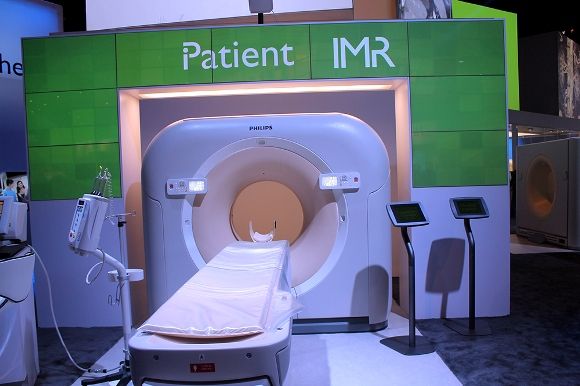
Philips highlighted its iMR, or Iterative Model Reconstruction, which seeks to achieve low-contrast CT images that are nearly free of noise. The technology is pictured here as part of Philips' Ingenuity Flex32 CT Scanner during RSNA 2012.
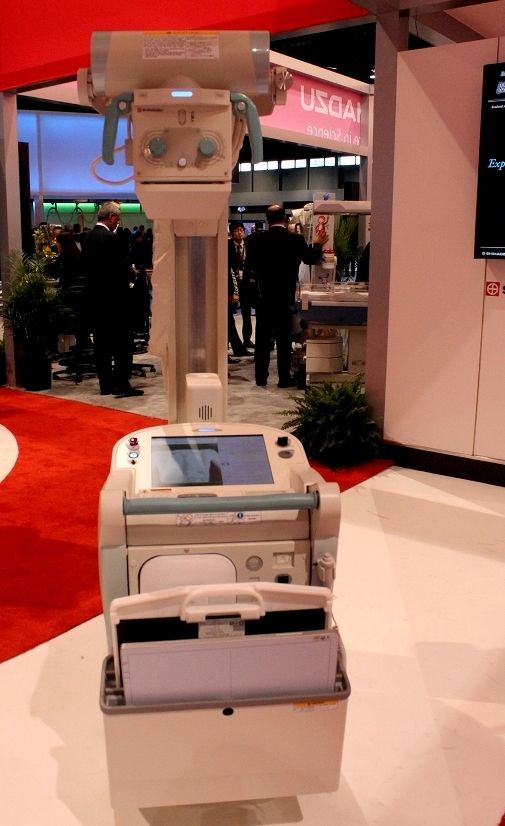
Shimadzu’s MobileDaRt Evolution features three-second image verification, an output of up to 32 kW, keyless verification, wireless networking, bedside drive controls and improved mobility.
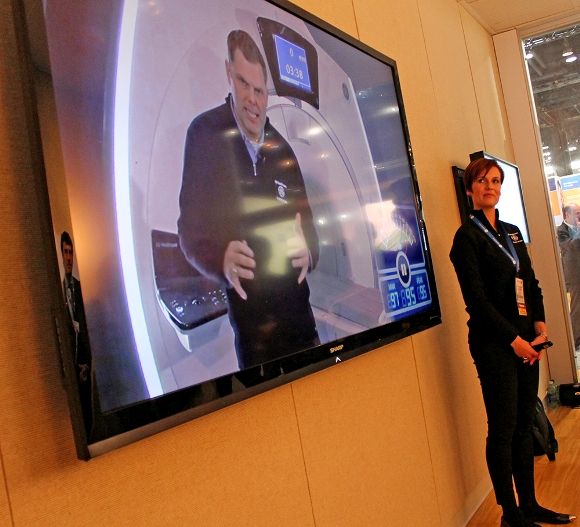
GE's Silent Scan technology (demonstrated here via a live broadcast of a scan) uses a new 3-D acquisition and reconstruction technique called Silenz to eliminate acoustic noise generated by MR scans. The system is pending 501(k) approval.

GE's Universal Viewer allows users to work on oncology and mammography imaging within a single workspace that features a user interface that can adapt to radiologist preferences, embedded clinical applications, and remote image access for referring physicians. This application was one of several major workflow solutions being highlighted at RSNA this year.

Toshiba's Aquilion RXL allows for lose-dose CT scanning with a high-resolution detector, accelerated workflow and automated processing, including ultrafast data transfer, clinical application software packages and automated bone-removal algorithms, according to the company.
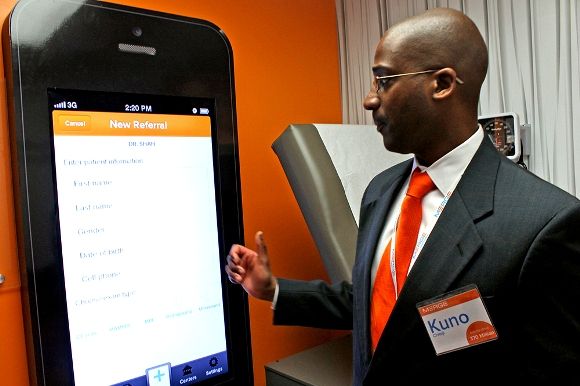
Merge's closed loop imaging solution aims to improve the patient experience through features such as consumer option information (to give them increased control over provider choices), mobile payments and HIPAA-friendly cloud access to their medical images. It also allows health care providers to view business-end analytics (such as referral rates, scheduling date preferences and profit/loss information), access patient images via cloud technology and share data with other clinicians who use the Merge system.
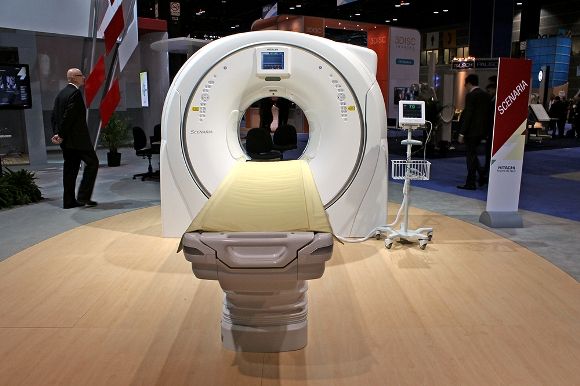
Hitachi's SCENARIA CT system looks to promote patient comfort with a 750 mm aperture and to increase patient safety by reducing dosage through the use of a 0.35-second rotation speed, lateral table movement, a bow-tie filter, automatic exposure control and interactive processing, according to the company.
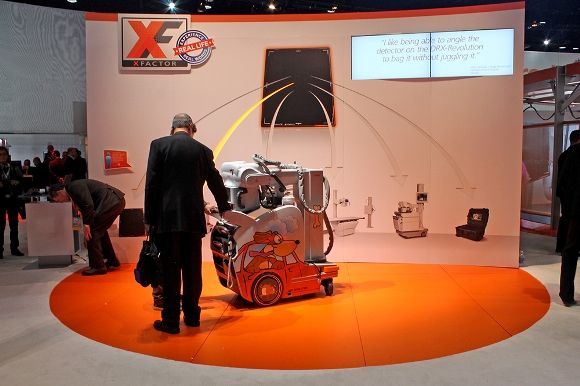
The Carestream DRX-Revolution Mobile X-ray System features an automatic collapsible column, storage bins, badge-swipe log-in, a wireless DRX digital detector, an in-cart detector battery charger, 2 touch-screen displays, prior-image review, a tube-and-grid alignment system, easy maneuverability and a maximum power output of 32 kW.
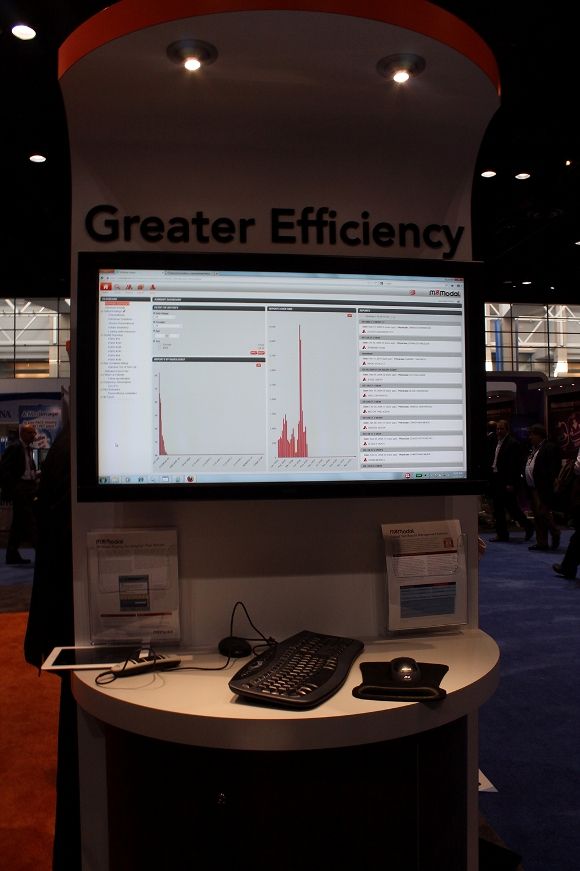
M*Modal's Speech Understanding technology uses a combination of speech recognition and natural language understanding to comprehend meaning and syntax and process speech into structured and encoded documents. It also boasts a cloud-based platform, continuous learning, information-driven workflows and unstructured data analytics, according to the company.
Can MRI-Based AI Bolster Biopsy Decision-Making in PI-RADS 3 Cases?
December 9th 2024In patients with PI-RADS 3 lesion assessments, the combination of AI and prostate-specific antigen density (PSAD) level achieved a 78 percent sensitivity and 93 percent negative predictive value for clinically significant prostate cancer (csPCa), according to research presented at the Radiological Society of North American (RSNA) conference.
The Reading Room: Artificial Intelligence: What RSNA 2020 Offered, and What 2021 Could Bring
December 5th 2020Nina Kottler, M.D., chief medical officer of AI at Radiology Partners, discusses, during RSNA 2020, what new developments the annual meeting provided about these technologies, sessions to access, and what to expect in the coming year.
RSNA 2020: Addressing Healthcare Disparities and Access to Care
December 4th 2020Rich Heller, M.D., with Radiology Partners, and Lucy Spalluto, M.D., with Vanderbilt University School of Medicine, discuss the highlights of their RSNA 2020 session on health disparities, focusing on the underlying factors and challenges radiologists face to providing greater access to care.
New Interventional Radiology Research Shows Merits of Genicular Artery Embolization for Knee OA
December 3rd 2024In a cohort of over 160 patients with knee osteoarthritis (OA), including grade 4 in nearly half of the cases, genicular artery embolization led to an 87 percent improvement in the quality of life index, according to research presented at the recent RSNA conference.
Siemens Healthineers Debuts New Photon-Counting CT Systems at RSNA
December 2nd 2024Debuting at the Radiological Society of North American (RSNA) conference, the new photon-counting computed tomography (PPCT) scanners Naeotom Alpha.Pro and Naeotom Alpha.Prime reportedly combine rapid scan times with high-resolution precision.